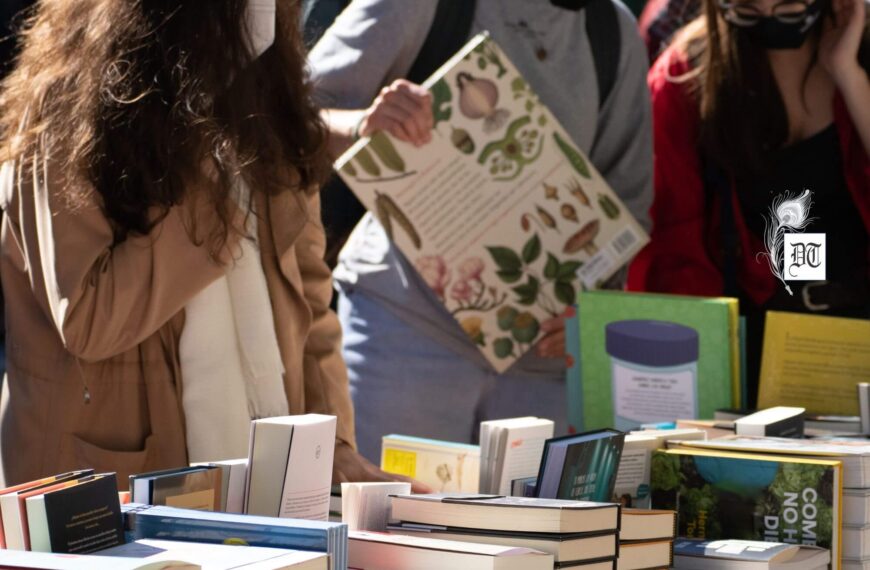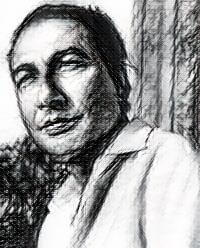American writers of the Indian sub-continent are women. They are Mary Anne Mohan Raj, Bharati Mukherjee, Jhumpa Lahiri and Bapsi Sidhwa, Pakistan’s important diasporic writer. In their writings, what we experience is the writhingly nostalgic pain, crises of their individual identity and rootlessness, opines Basudeb, in the regular column, exclusively in Different Truths.
In the late sixties, when I was an undergraduate student of a college in Calcutta, I formed an impression of what the society of the United States was. I could form somehow an impression of the American society and Americanism because of my frequent visits to USIS library, located at the main intersection of Esplanade area in Calcutta. Another important reason for my visit to this place during the summer in Calcutta was that the library was in those days centrally air-conditioned. On my way home at South Calcutta from College Street, the late afternoon was a very comfortable time for cosy sitting on the library chair and browsing books and journals in the USIS library. Air-conditioned comfort in those days was luxurious and an extra incentive.
 In those days, my idea about America was that it is a melting pot, meaning metaphorically a place where people from different parts of the world come carrying with them their culture and tradition and ultimately all cultures and traditions are melted into one culture. It means people carrying heterogeneous cultures, after landing on this side of the Atlantic gradually becomes homogenous culturally. An Irish person after landing on the East coast of America naturally forgets his Irish traditions and backgrounds and he is melted with the passage of time into Americanism because America is a melting pot. Immigrants after the Second World War coming to settle down permanently in America abandoned their own culture and became fully absorbed in Americanism. And this melting pot that creates a new type of culture is unitary, indivisible and monolithic. This culture is the basis of so-called ‘American Pride’, which was conspicuous at one stage of the recent history of modern civilization. It was also justifiable. The phrase “melting pot” was used and popularised by an immigrant Israeli, Zangwill, after the Second World War.
In those days, my idea about America was that it is a melting pot, meaning metaphorically a place where people from different parts of the world come carrying with them their culture and tradition and ultimately all cultures and traditions are melted into one culture. It means people carrying heterogeneous cultures, after landing on this side of the Atlantic gradually becomes homogenous culturally. An Irish person after landing on the East coast of America naturally forgets his Irish traditions and backgrounds and he is melted with the passage of time into Americanism because America is a melting pot. Immigrants after the Second World War coming to settle down permanently in America abandoned their own culture and became fully absorbed in Americanism. And this melting pot that creates a new type of culture is unitary, indivisible and monolithic. This culture is the basis of so-called ‘American Pride’, which was conspicuous at one stage of the recent history of modern civilization. It was also justifiable. The phrase “melting pot” was used and popularised by an immigrant Israeli, Zangwill, after the Second World War.
The idea of “melting pot” naturally evokes the idea of “salad bowl” in everybody’s mind. Cultures carried by immigrants coming from different parts of the world are metaphorically accepted as vegetables or ingredients used as a salad at the dinner table. Can there be any integration of taste of all vegetables into one? The salad bowl is a metaphor for the assimilation of various cultures in a particular heterogeneous society? America is a land of immigrants. The May Fair ship in 1620 from Amsterdam carried the persecuted Puritans to this part of the Atlantic. Since the First World War, in particular, and the World War II in general, America becomes the destination of Jews and a good number of fortune seekers, professionals, and intellectuals.
America has become also a very good hunting ground for those who come to try their fortunes. In those days, American immigration laws were not stringent as they were after the eighties of the last century, particularly after the Vietnam War and the fall of Shah of Iran in the early eighties. But till date immigrants in huge number from different countries are welcome; they are happily accommodated in this country.
days, American immigration laws were not stringent as they were after the eighties of the last century, particularly after the Vietnam War and the fall of Shah of Iran in the early eighties. But till date immigrants in huge number from different countries are welcome; they are happily accommodated in this country.
To accept all these and to accept that America is a multicultural society seems to be ticklish. American writers from East Asia and South Asia, writers emigrating from China suffer their crises of identity. And some of them come to this land of opportunity on their own professional merits and some come here through matrimonial alliances. Surprisingly, American writers of the Indian sub-continent are women writers. They are Mary Anne Mohan Raj, Bharati Mukherjee Jhumpa Lahiri and Bapsi Sidhwa, Pakistan’s important diasporic writer. All of them, except Jhumpa Lahiri, belong to the first generation of immigrants now settled in America.
In their writings what we experience is the writhingly nostalgic pain, crises of their individual identity, rootlessness, their intent desire to visit their homelands at least once a year and their justifiable inability to involve themselves in any cultural or social American activity. They are in a cultural dilemma. Their love for both America and the Indian sub-continent are split. Indian immigrants practice an American public life but in their private life, at home, they follow typically Indian values. A good number of bridegrooms from America are found in Indian marriage markets. They look for their wives from India. I have also found some Indian parents at Kearney, Nebraska, who help their children learn their mother tongues like Gujarati, Hindi, Bengali, and Marathi. It is like the moving ahead with the two legs, keeping one leg on one boat and another leg on the second boat, floating side by side on the river. Most of the Indian immigrants settled in America look for Indian grocery stores in their cities they live in. Every Indian lady of the first generation of immigrants is crazy after Indian sarees and Indian necklaces or bangles made of gold by Indian jewellers.
Thus, the concept of America as a ‘melting pot’ may be ignored. The concept of America as ‘salad bowl’ may be valid if it is seen that vegetables or ingredients in the salad bowl maintain their own tastes and characters when the bowl is served on dinner tables. It is then a fact that America is a multicultural society. In a multi-cultural society, every cultural community maintains its own identity and grows equally. So in America one may have multiple identities, an individual identity, an identity as a member of a community and an American identity. One does not require to eschew one’s own identity for being a true American. And this is the American reality. To everybody, if he has the talent, the sky is his limit. A qualm on this point is that whether the total amalgam of all different tastes of vegetables or ingredients of a salad bowl is possible are not. If it is possible, it will be then the qualitative changes of all vegetables or ingredients in the salad bowl. Maybe, this is what Americanism is.
©Basudeb Chakraborti
Photos from the Internet
#AmericanWritersOfIndianOrigin #JhumpaLahiri #MaryAnneMohanRaj #BharatiMukherjee #BapsiSidhwa #USISLibrary #MeltingPot #SaladBowl #MakingOfLiterature #DifferentTruths




 By
By
 By
By
